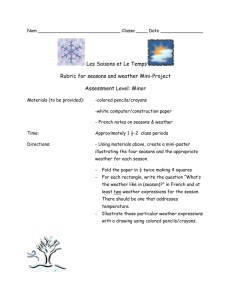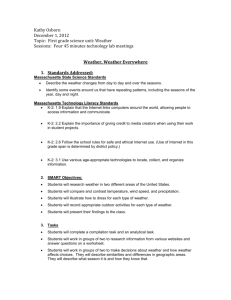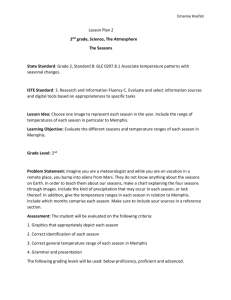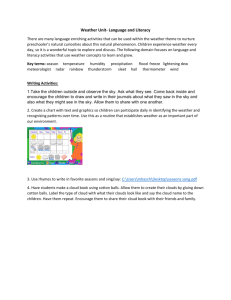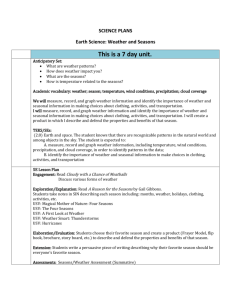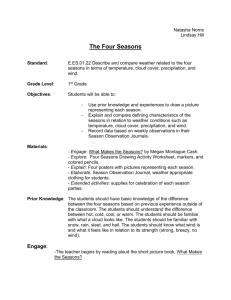E.ES.01.22 Fall 09
advertisement
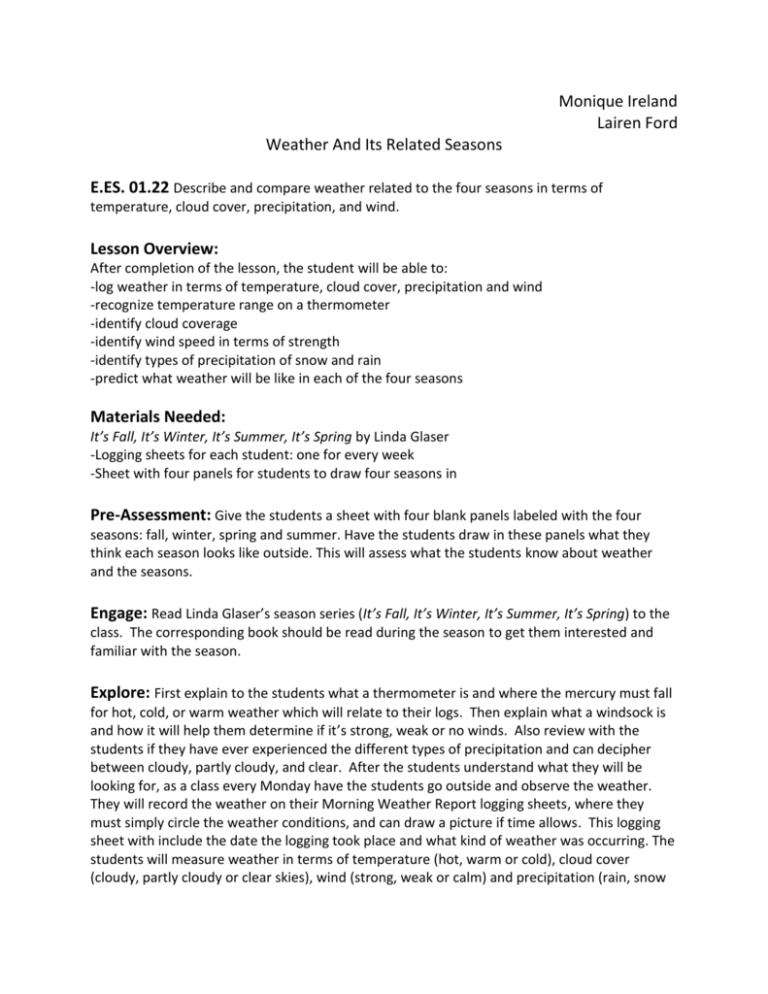
Monique Ireland Lairen Ford Weather And Its Related Seasons E.ES. 01.22 Describe and compare weather related to the four seasons in terms of temperature, cloud cover, precipitation, and wind. Lesson Overview: After completion of the lesson, the student will be able to: -log weather in terms of temperature, cloud cover, precipitation and wind -recognize temperature range on a thermometer -identify cloud coverage -identify wind speed in terms of strength -identify types of precipitation of snow and rain -predict what weather will be like in each of the four seasons Materials Needed: It’s Fall, It’s Winter, It’s Summer, It’s Spring by Linda Glaser -Logging sheets for each student: one for every week -Sheet with four panels for students to draw four seasons in Pre-Assessment: Give the students a sheet with four blank panels labeled with the four seasons: fall, winter, spring and summer. Have the students draw in these panels what they think each season looks like outside. This will assess what the students know about weather and the seasons. Engage: Read Linda Glaser’s season series (It’s Fall, It’s Winter, It’s Summer, It’s Spring) to the class. The corresponding book should be read during the season to get them interested and familiar with the season. Explore: First explain to the students what a thermometer is and where the mercury must fall for hot, cold, or warm weather which will relate to their logs. Then explain what a windsock is and how it will help them determine if it’s strong, weak or no winds. Also review with the students if they have ever experienced the different types of precipitation and can decipher between cloudy, partly cloudy, and clear. After the students understand what they will be looking for, as a class every Monday have the students go outside and observe the weather. They will record the weather on their Morning Weather Report logging sheets, where they must simply circle the weather conditions, and can draw a picture if time allows. This logging sheet with include the date the logging took place and what kind of weather was occurring. The students will measure weather in terms of temperature (hot, warm or cold), cloud cover (cloudy, partly cloudy or clear skies), wind (strong, weak or calm) and precipitation (rain, snow or none). They will use these simple terms for measurement because they are first graders with a new introduction to seasons and weather. Explain: At the end of each season marked by the vernal equinox (March 20th) and winter solstice (December 21st) as well as the beginning and end of school, as a class discuss the observations made for each season. The discussion will be guided by teacher directed questions on what the students saw and what conditions may have caused the observed weather. The weather during the season will be discussed as well as transitions the students may have seen that led to the next season. Elaborate: Have the students make verbal predictions of what type of weather they will observe for the next season. The teacher can start a discussion with the class using questions based on combining past experience as well as current observations. Evaluate: Have the students create a four panel picture, just like the pre-assessment, except the students will be graded based on their inclusion of winds, cloud cover, temperature, and precipitation.


